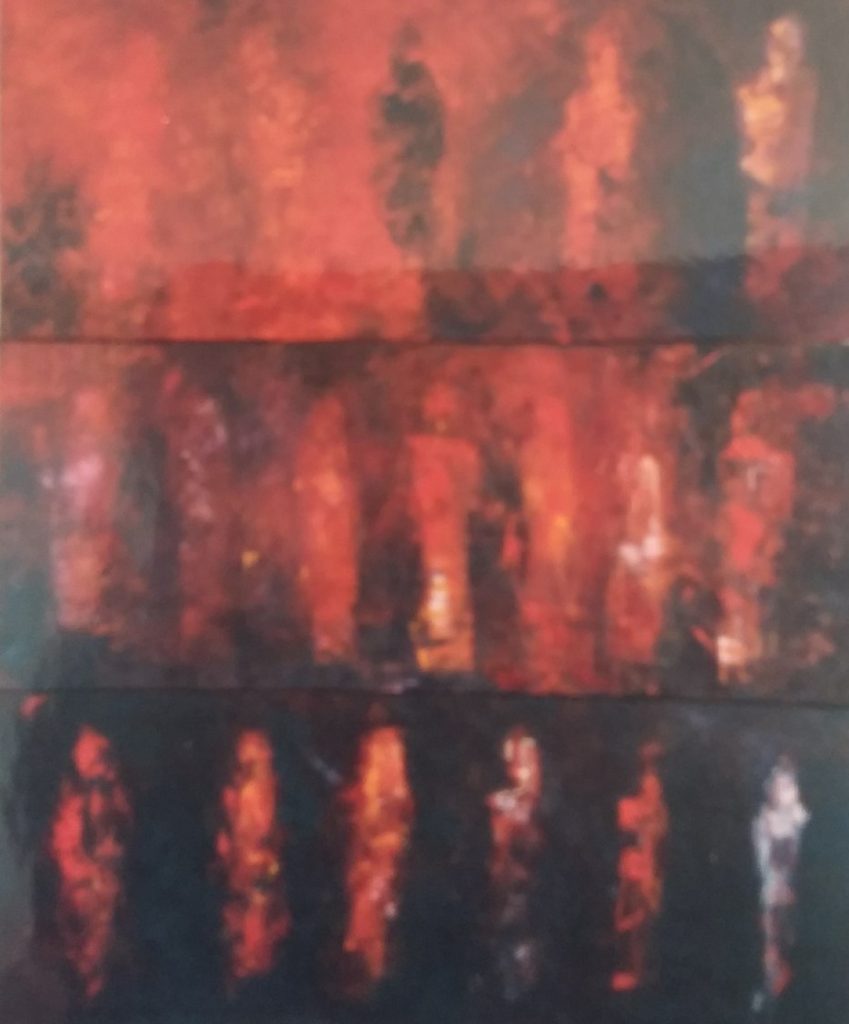Part 1 Eurydice
As mentioned in my previous blog, I have turned full circle to take new pleasure in Greek myth https://margotaloudon.eu/greek-myths-reflected-in-my-work
I didn’t wake up one morning and decide to paint Eurydice. I don’t paint like that. Instead the theme emerged when I was taking my inspiration from ancient sculpture and the subject started to find its way out of the painting .
Eurydice came to me first for an exhibition in Dover in 2005 , The Invisible in the Image. I painted a series of archaic korai, figures of standing young women. I tried to convey their elusive qualities; we can touch these statues but a gulf of time separates us from full understanding of the emotions behind their creation and in their reception. As I tried to express this haunting, invisible, aspect of the beautiful statues, I thought of Greek mythical heroines who poised between life and death were seen and unseen, between the underworld and our world of light, notably Persephone who against her will became queen of that grim kingdom, Alcestis who died in her husband’s place but was restored to life in her shroud, and Eurydice who on the plea of fabled singer and musician husband Orpheus came so near to living again.
Moved by the music of Orpheus, the harsh gods of the underworld agreed that he could take Eurydice home with him provided that as he left their kingdom of the dead, he did not look back. Fatally Orpheus glanced back just before he and Eurydice arrived back in the light. As a consequence, Eurydice died a second time.
In three canvases sold in the 2005 exhibition, the shape of a figure appears and disappears, melts in flame coloured light, vanishes into darkness. Eurydice made another appearance in my 20I5 exhibition, Reflections on A Myth. In a different compositional format, Eurydice’s ghostly presence, so near to emerging into the light but sucked into darkness, again found a place.
.


In a following blog I shall take up the story of the grief stricken Orpheus.
